Bill Wilson’s Experience with LSD
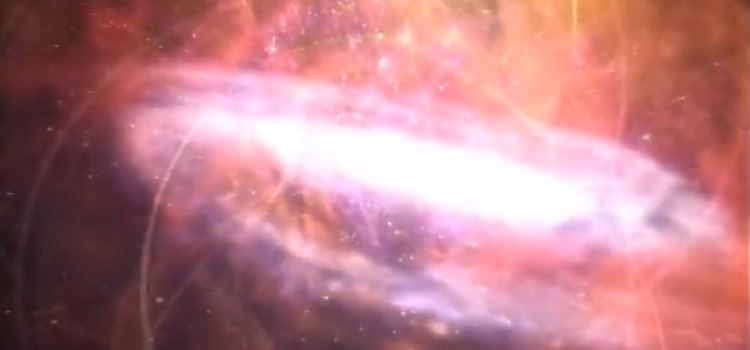
By Thomas B.
In what has to be one of the strangest ironies I’ve ever experienced, I came across a post in a most unlikely place that served as the inspiration to write this article about Bill Wilson’s experience with LSD. It was on an ultra-fundamentalist, Christian blog, which was highly critical not only of AA in general, but of Bill Wilson in particular. On the blog, My Word Like Fire, author unknown, I found this reference to one of Bill’s LSD sessions with Betty Eisner: Betty the LSD researcher and AA co-founder Bill Wilson. Betty was an associate of Dr. Sidney Cohen, who participated in at least two of the LSD sessions Bill experienced in the late 1950s at the Veterans Administration hospital in Los Angeles.
In an entry on “A Narrative Timeline for AA History”, found on Silkworth.net and dated August 29, 1956, we learn that “Bill W. joined with Aldous Huxley and took LSD in CA under the guidance of Gerald Heard and Sidney Cohen.”
Ernie Kurtz describes this first instance of Bill using LSD on the first page of an 1989 article, Drugs and the Spiritual: Bill Takes LSD, published by Lear magazine, which is archived on William White’s website:
His “doors of perception” cleared, colors glowed more intensely, the voice of Dr. Cohen reverberated with new resonance, all motion flowed with languorous beauty, and above all, he comprehended “the essential All-Rightness” of the universe… the reconciliation of opposites.
By the mid-1950s, when he was writing AA Comes of Age, Bill was acutely aware that there were many people unable to experience a spiritual experience – or psychic change as described in Appendix II of the Big Book – sufficient to bring about recovery from alcoholism. Consequently, he was constantly searching for effective ways to reach those suffering alcoholics who did not respond to AA’s program as prescribed in the Big Book. As Ernie Kurtz, notes on page 4 of the Lear article:
In a very real sense, the story of Bill’s sobriety details the turning of his thirst for alcohol into a thirst for alcoholics… But Bill also learned, in those first twenty years, that the main obstacle to drunks “getting” AA was “spiritual”.
Friendships with Gerald Heard and Aldous Huxley
Starting in the mid-1940s, Bill developed a deep and long-lasting friendship, mostly through correspondence, with the eccentric Anglo-Irish writer, philosopher and mystic, Gerald Heard, who became one of Bill’s foremost spiritual mentors throughout his life. Bill and Heard both suffered from debilitating depressions and helped each other via their correspondence. Heard introduced Bill to his close friend, Aldous Huxley, author of Doors of Perception, which described his psychedelic experience with mescaline, the psychoactive alkaloid from peyote.
Through his friendships with Heard and Huxley, Bill became aware of the research conducted by two Canadian doctors, Abram Hoffer and Humphrey Osmond, who were using psychedelics – a term coined by Osmond – to treat alcoholics and schizophrenics. Their research was part of an extensive range and large number of psychedelic studies in the 20-year period from 1953 to 1973, which is summarized in a recent New Yorker article The Trip Treatment.
However, after the turbulent 60s, dominated by the youth counterculture, Richard Nixon curtailed all federal funding for research and placed psychedelics on Schedule 1 of the Controlled Substances Act. As the New Yorker article noted, “Research soon came to a halt, and what had been learned was all but erased from the field of psychiatry”.
Initially, Bill was not at all enthusiastic about experimenting with drugs to help alcoholics achieve a “spiritual awakening” breakthrough. However, as he learned about the positive results Hoffer and Osmond were getting with alcoholics in Canada, his curiosity and interest increased.
Bill’s First Trip
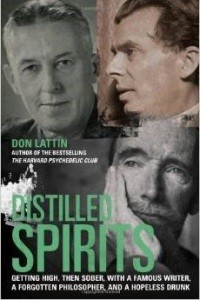 Under the supervision of Dr. Sidney Cohen with Gerald Heard, a trusted spiritual mentor, as his guide, Bill had his first experience with LSD August 29, 1956. In a fascinating book by Don Lattin, Distilled Spirits: Getting High, Then Sober, With A Famous Writer, A Forgotten Philosopher, and A Hopeless Drunk, on pages 192-3, Lattin imagines what the mystic Heard, who believed that LSD was God’s gift to humanity to prevent Armageddon, may have said to Bill before the session:
Under the supervision of Dr. Sidney Cohen with Gerald Heard, a trusted spiritual mentor, as his guide, Bill had his first experience with LSD August 29, 1956. In a fascinating book by Don Lattin, Distilled Spirits: Getting High, Then Sober, With A Famous Writer, A Forgotten Philosopher, and A Hopeless Drunk, on pages 192-3, Lattin imagines what the mystic Heard, who believed that LSD was God’s gift to humanity to prevent Armageddon, may have said to Bill before the session:
This should not be undertaken alone. You’ll have two people at your side who are intimately acquainted with LSD. We will not intrude on your experience, but neither will we leave you figuratively or literally in the dark. You’ll feel nothing for the first forty-five minutes or so. Then, as the first hour wears away, some subjects become convinced they are feeling odd… I don’t know any of our friends who have taken it who haven’t said this one thing: “Well, I never knew anything like that in my whole life.” First, there are the colors and the beauties and designs and the way things appear. But that’s just the beginning. At some point you notice that there aren’t these separations that we normally feel. We are not on some separate island — shouting across and trying to hear what the other is saying. Suddenly you know. You know empathy. It’s flowing underneath us. We are parts of a common continent that meet underneath the water. And with that comes such delight — the sober certainly of waking bliss.
On page 241 of Susan Cheever’s biography of Bill, she reports the notes that Heard took during Bill’s first LSD Session:
At 1:00 pm Bill reported “a feeling of peace.” At 2:31 pm he was even happier. “Tobacco is not necessary to me anymore,” he reported. At 3:15 pm he felt an “enormous enlargement” of everything around him. At 3:22 pm he asked for a cigarette. At 3:40 pm he said he thought people shouldn’t take themselves so damn seriously.
Though Bill’s depression lifted for awhile, it returned when he returned to New York. In a September 26, 1956 letter to Heard, which Lattin quotes on page 204, Wilson wrote:
On my return home, I fell into one of my fits of exhaustion, which bordered on the serious. I do not think that in any way my state is related to my experience in looking through “The Doors of Perception.” In spite of my temporary condition, I do feel a residue of assurance and a feeling of enhanced beauty that seems likely to stay with me.
Lattin highlights on page 193 another letter to Heard where Bill relates:
I am certain that the LSD experience has helped me very much. I find myself with a heightened color perception and an appreciation of beauty almost destroyed by my years of depression… The sensation that the partition between “here” and “there” has become very thin is constantly with me.
LSD Experiences with Betty Eisner and Tom Powers
Betty Eisner, PhD, was a research assistant for Dr. Sidney Cohen at the Los Angeles VA Medical Center during the 1950s, where Bill had two sessions with LSD.
In Remembrances of LSD Therapy Past, she writes about her career as a psychotherapist, utilizing LSD and other substances, in a 200-page PDF. She includes extensive correspondence with colleagues within this captivating memoir of her clinical work, first at the Los Angeles VA Medical Center and then in private practice with a group of other psychologists, who were engaged in psychedelic research funded by the US government.
She and her husband, Will, met and used LSD with Tom Powers, a sponsee of Bill’s, who helped write Twelve Steps and Twelve Traditions, and with whom she exchanged extensive correspondence for several years.
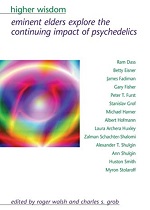 She describes in detail, on pages 25-28 of Remembrances, an LSD session Bill W. experienced on February 16, 1957, with Dr. Cohen, Tom Powers and Betty present. In an interview on page 94 provided to Roger Walsh and Charles Grob for their 2005 book, Higher Wisdom: Eminent Elders Explore the Continuing Impact of Psychedelics, which Don Lattin quotes on page 198 of Distilled Spirits, Betty relates the following in regards to Bill’s thinking before his LSD session:
She describes in detail, on pages 25-28 of Remembrances, an LSD session Bill W. experienced on February 16, 1957, with Dr. Cohen, Tom Powers and Betty present. In an interview on page 94 provided to Roger Walsh and Charles Grob for their 2005 book, Higher Wisdom: Eminent Elders Explore the Continuing Impact of Psychedelics, which Don Lattin quotes on page 198 of Distilled Spirits, Betty relates the following in regards to Bill’s thinking before his LSD session:
Alcoholics Anonymous was actually considering using LSD. Alcoholics get to a point in the program where they need a spiritual experience, but not all of them are able to have one. Tom Powers was Bill Wilson’s right-hand man in this. Tom had been through hell with alcoholism, so he brought Bill Wilson out to meet with us. Sid and I thought it might be a good idea to try a low dose together, but when I met Bill, I thought, “Uh-oh, this is going to be his therapy session.” And that’s one of the things it turned out to be. We each took twenty-five gamma, except for Bill. Sid offered him several pills, and Bill said, “Don’t ever do that to a drunk,” and took two. But the rest of us just took one.
During the session, Betty and Tom acted as co-therapists for Bill while Dr. Cohen quietly observed. At one point Tom became very moved, crying when Gregorian Chants were played. She notes that Bill, noticeably more relaxed and looking years younger, also came close to crying twice, once when discussing his mother and again when discussing his father. She makes these further observations about Bill’s experience of LSD Therapy:
I do think that there were two important parts, though – W.s experience of himself as unloved, and the perception that it was not through himself but because of his parents that this occurred… And we talked about trust, and the difficulty that W. doesn’t trust anybody: he can’t let them close because he doesn’t trust himself – that he may kill them before being killed, and the “depressive” will kill himself first…
Here is an excerpt from a February 26, 1957 letter from Tom Powers to Betty on page 29 of Remembrances:
I think both you and Will are wonderfully good for W. because you are among the very few people who are interested enough and loving enough to deal with him forthrightly and outside of the highly forced and artificial context of his position in AA. Something did him a whale of a lot of good — obviously, visibly so — while he was out there this last time, and I think you and the LSD are very largely responsible.
In a March 22, 1957, Bill W. wrote a letter to Betty, thanking her and her husband, Will, for their hospitality, where he notes, “Since returning home I have felt — and hope have acted! — exceedingly well. I can make no doubt that the Eisner-Cohen-Powers-LSD therapy has contributed not a little to this happier state of affairs.”
Powers wrote to Betty on April 13, 1957, discussing the impact of Bill’s use of LSD, “W. is strongly affected for the good. Everyone notices how much better he is. He himself is very happy about it and realizes clearly what it is that has done it”.
There are no other references to Bill W. in Remembrances except for a series of letters between Bill, Betty and Powers concerning plans for other sessions or visits both in California and New York. Apparently, however, these never took place.
Bill and Tom Powers continued using LSD for several more years in New York, forming an experimental group during the late 50s that possibly extended into the 60s. The August 29, 1956 entry on the AA Timeline referred to above reports:
Others invited to experiment (and who accepted) were Nell Wing, Father Ed Dowling, Sam Shoemaker and Lois Wilson. Marty M and Helen W (Bill’s mistress) participated in NY. Bill had several experiments with LSD up to 1959 (perhaps into the 1960’s).
Francis Hartigan, the former secretary and confidant to Lois Wilson, on pages 178-9 of his biography, Bill W., A Biography of Alcoholics Anonymous Cofounder Bill Wilson, affirmed these participants in the LSD New York experiments, when he interviewed Lib S., a longtime New York City AA member, who also participated in the experiments.
The Significance of Bill’s Use of LSD
What’s the significance of Bill’s use of LSD? In AA’s official biography, Pass it On, a whole chapter is devoted to Bill’s experimentation with LSD. On page 371, it’s noted:
Bill was enthusiastic about his experience with LSD; he felt it helped him eliminate barriers erected by the self, or ego, that stand in the way of one’s direct experience of the cosmos and of God. He thought he might have found something that could make a big difference to the lives of many who still suffered.
His use of LSD, however, caused considerable controversy within AA, Many close associates, including Dr. Jack Norris, then Chairman of the AA Board of Trustees, were most concerned. Bill was therefore persuaded to cease his experiments with LSD. Now, let’s look at what occurred after Bill’s use of LSD in August of 1956:
- Alcoholics Anonymous Comes of Age was published in 1957.
- The AA Service Manual Combined With Twelve Concepts for World Service was published in 1962.
- The Responsibility Statement was adopted in 1965.
- The Declaration of Unity was adopted in 1970.
- Over 50 articles were published in the Grapevine, including “The Next Frontier – Emotional Sobriety”, “Our Critics Can Be Our Benefactors”, “The Language of the Heart”, and “God As We Understand Him: The Dilemma of No Faith”.
Bill lived a most productive and active life until he passed on January 24, 1971. He engaged in voluminous correspondence with notable persons, as well as innumerable members of AA. Though at times normally depressed, he was not again debilitated as he had been at times during the 1940s and early 1950s. He remained fully engaged with Lois, friends, and many associates throughout AA.
Bob Pearson, General Manager of the General Service Office from 1974 to 1984, described Bill as being, “perhaps the most permissive person I ever met… He was maddeningly tolerant of his critics, and he had absolute faith that faults in A.A. were self-correcting”.
In 1968, a well-meaning member of AA conveyed to Bill deep concern about the influx of young hippies, the flower children of my-my-my-ah generation, who were flooding AA rooms with their strange dress, different sexual mores and unorthodox behavior, which included using drugs. He feared they “might be a very real threat to our wonderful God-given Program”. As excerpted in the March 1971 Grapevine article by Bernard B. Smith, “The Traditions in Action”, Bill’s response was typical:
Some weeks ago there was a young people’s convention of AAs. Shortly thereafter, four of these kids visited the office. I saw one young gal prancing down the hall, hair flying, in a miniskirt, wearing love beads and the works. I thought, “Holy smoke, what now!” She told me she was the oldest member of the young people’s group in her area — age twenty-two! They had kids as young as sixteen. I was curious and took the whole party out to lunch.
Well, they were absolutely wonderful. They talked (and acted) just about as good a kind of AA as I’ve seen anywhere. I think all of them said they had had some kind of drug problem, but had kicked that too.
I surmise that Bill’s continued productivity and creativity during the 50s and 60s until he died in 1971, as well as his “permissiveness” and “maddening” tolerance, is to some considerable degree the result of his having experienced LSD.
Renewed interest and research in the use of psychedelics
After decades of draconian suppression, in 1990, at the University of New Mexico, Rick Straussman, M.D., initiated the first US-government approved research on psychedelics, when he administered over 400 doses of the short-acting, but extremely powerful psychedelic DMT to sixty volunteers in the hospital of the University of New Mexico Medical School in Albuquerque. I recommend his book, DMT: The Spirit Molecule, which discuss his findings and conclusions.
Funding for and research involving psychedelics has been forthcoming ever since by organizations such as the Multidisciplinary Association for Psychedelic Studies (MAPS) and major University medical centers throughout the US and Canada, such as New York University, about which “The Trip Treatment” article in New Yorker cited above was written. Current studies are using psychedelics for the treatment of PTSD (combat-related and from childhood trauma and sexual abuse), depression and anxiety.
Studies are also being done in which psychedelics are used for the treatment of alcoholism.
Bill Wilson and LSD all over again?


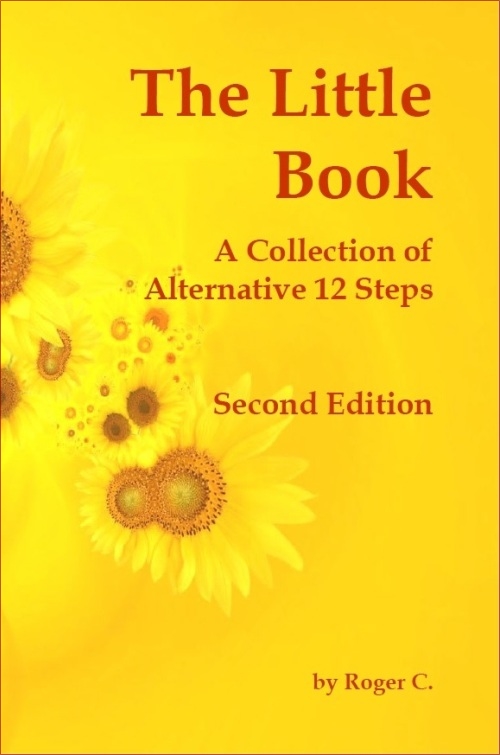
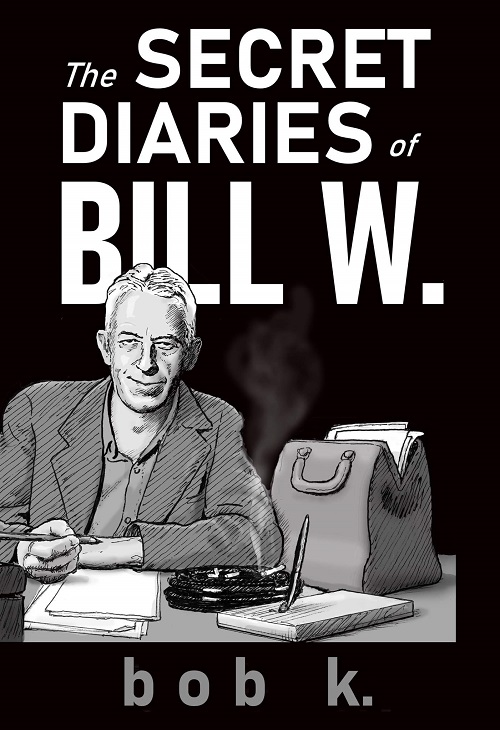
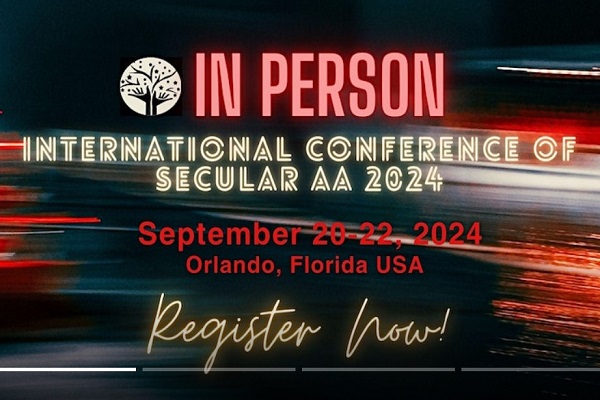
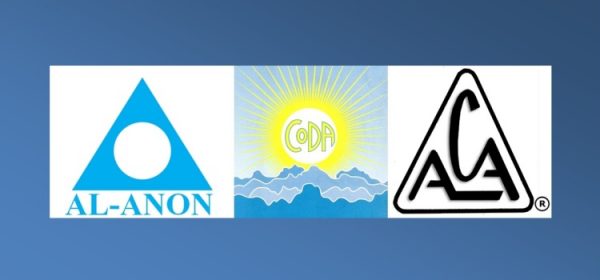

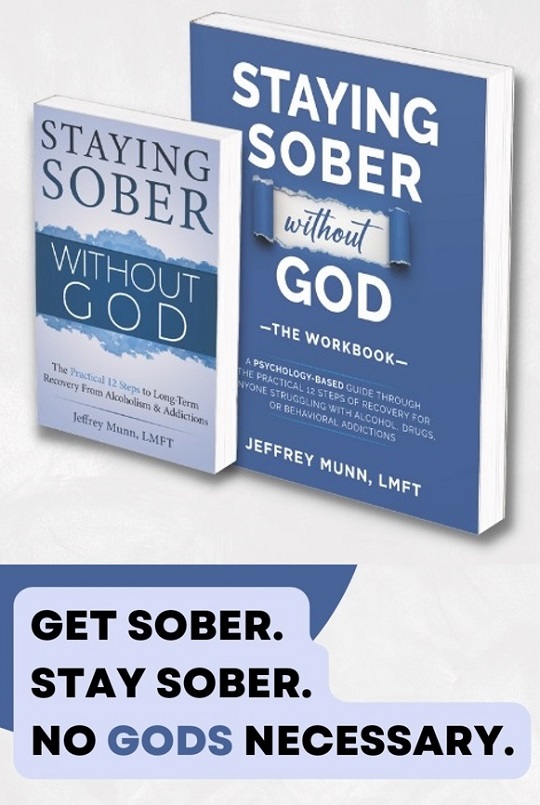
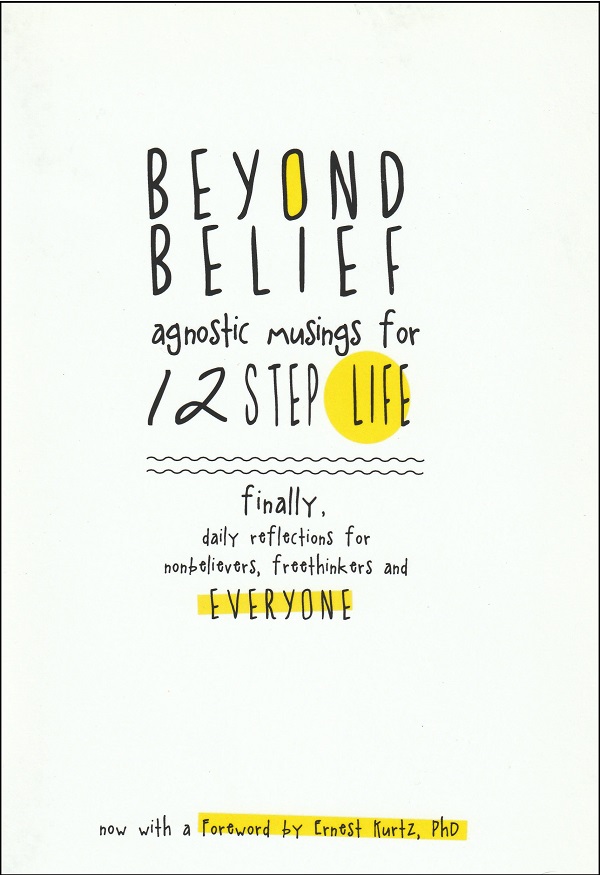


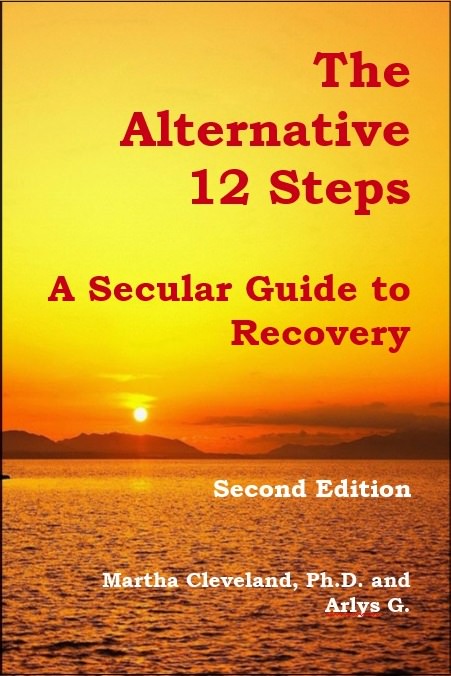
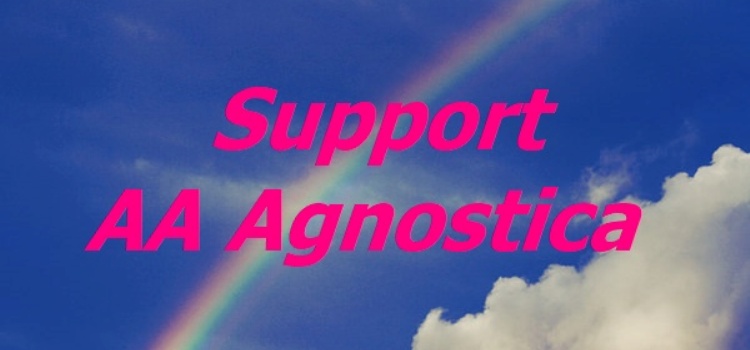


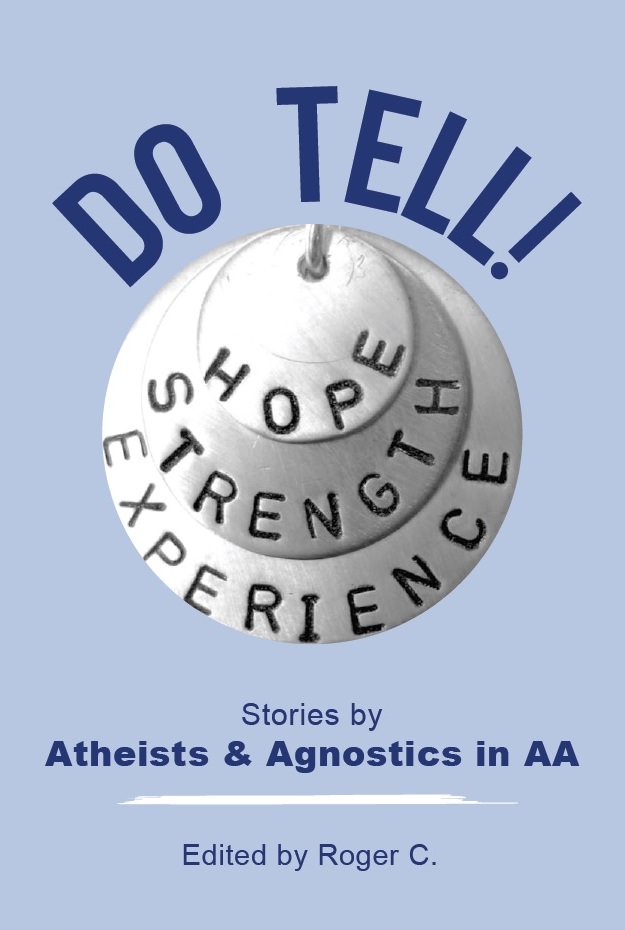
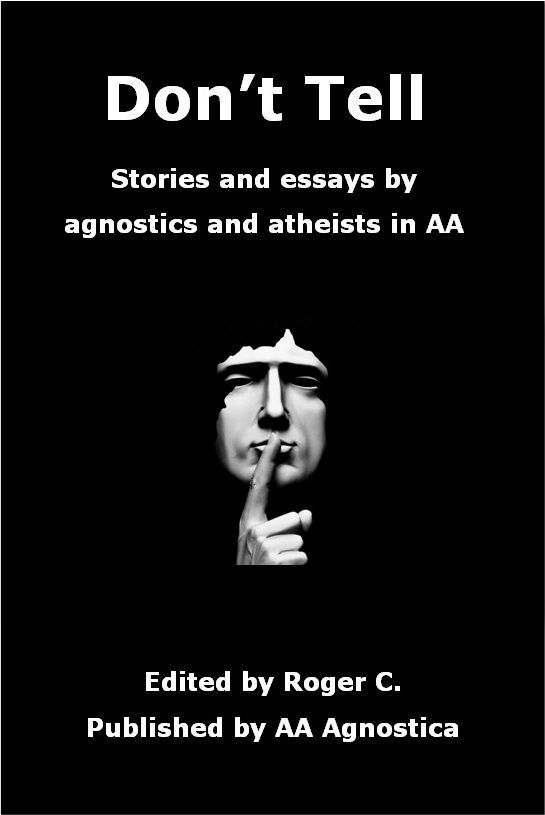
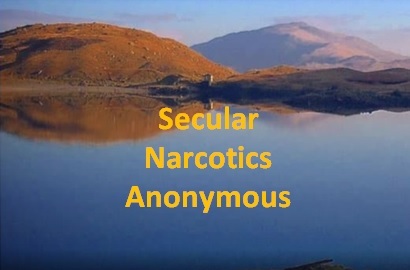

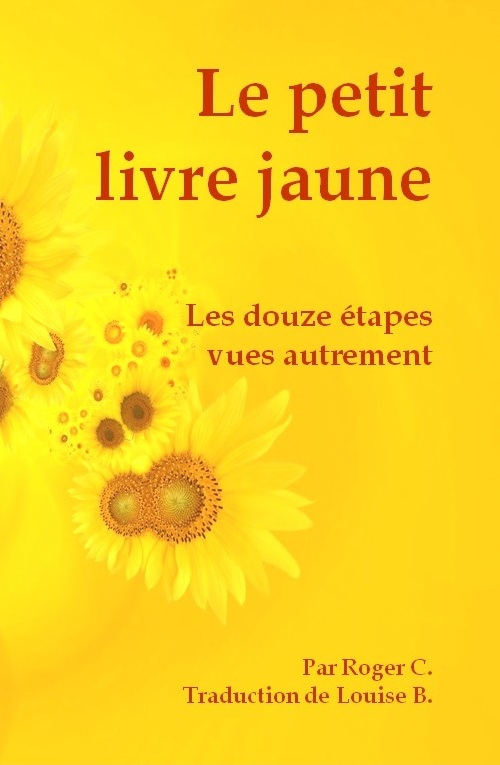

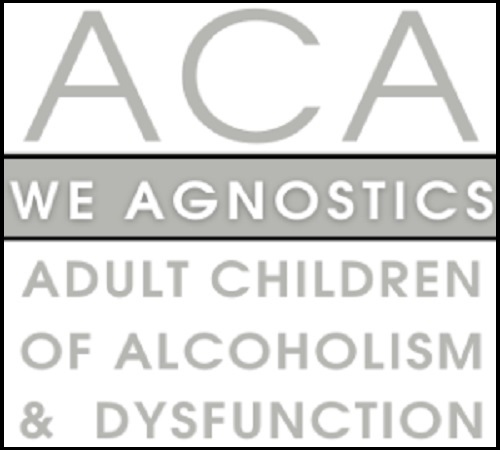


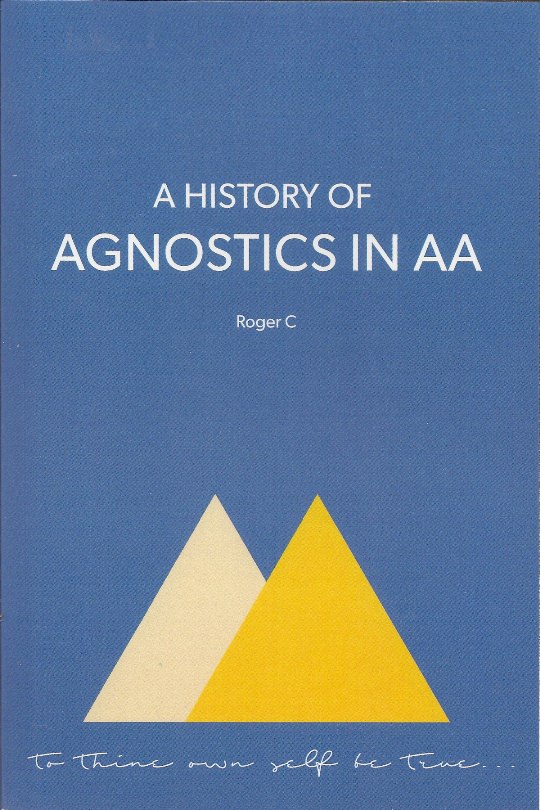
An excellent article.
Thanks for posting it.
Thanks Tommy . . .
Thank you, Thomas. A great compassion arose within me when I read the part about Wilson’s relating about his feelings of being unloved, his parents and his depression. But just wait until this information with drug experimentation becomes even more common knowledge! A real weapon of derision and exclusion. This is perhaps where the vehement recoil from any mention of drugs in meetings came from among thumpers.
Thanks Christopher . . .
What has always puzzled me is the emphasis on Primary Purpose of AA being alcohol only. This is not the experience of our early founders. Though the use of other drugs was perhaps to a much less degree than occurred later during the 60s/70s/80s down to the present day, there was enough use for other drugs for the founders to mention both sedative hypnotics and morphine by alcoholics on page 22 of the Big Book. Dr. Bob used equally both alcohol and self-prescribed sedatives. The original story of Dr. Paul O, “Doctor, Alcoholic, Addict,” published in the 3rd Edition was changed in the 4th Edition to “Acceptance Was the Answer”. I wonder how come? Because increasingly since the 1970s, there has been considerably discussion in AA to limit membership and discussion to alcohol-using alcoholics only.
I don’t think, Christopher, this is due to Bill’s use of LSD. I got sober in NYC in the 70s. Lots of folks with “quality” sobriety, myself included, were using other drugs, marijuana and the early minor tranquilizers prescribed by MDs, but they were sober from the liquid, legal drug, alcohol. There is also a social bias factor here. Alcoholics were indeed spurned by proper WASP society, but at least they were not criminals who used drugs !~!~!
During the 80s with the surge of cocaine abusers coming into the rooms of AA due to the explosion of Hazelden-model Chemical Dependency treatment programs was when GSO printed the Blue Card, which suggests limiting discussion to alcohol-only. What this fails to recognize is that many people are addicted to multiple drugs to include the liquid, legal drug alcohol, who therefore qualify via the 3rd Tradition with a desire to stop drinking as well as using other drugs.
This continues, from my recent experience of PRAASA in March, to be a hotly discussed topic within many rooms of AA. Our solution with the secular sobriety meetings in Portland is to make them open meetings. Our group conscience is that we are very tolerant of people talking about other drugs in our meetings.
Excellent and well sourced as it is completely necessary. Thank you for this!
Thanks Larry — a tip of the historical hat to ya . . . 😉
Thanks for posting this article. It is the most detailed account of Bill’s experiences with psychotropic drugs. Thanks also for pointing us to both of the highlighted books. Having been clean and sober for a long time now, I still occasionally imagine that there might be more for me to gain from pyschedlic compounds – particularly psilocin/psilocybin. The only way to know is to go ahead and use these or similar drugs again. In order to do that I face one serious question: am I a guy who never uses mind altering drugs? or not? To my delighted surprise I find that I am more drawn to continuing my total abstinence than I am drawn to using these drugs again. My former self would have been astonished could he have known this was his destiny.
Thanks Russ — you express much wisdom, which I highly respect.
My experience with the liquid, legal drug ETOH was so disastrous that I was petrified of using any of the psychedelics so prevalent among folks of our-our-our-ah generation. I bought completely the government hype about the dangers of their use.
I have to admit that I have been reading extensively into the efficacious use of them, now that they are once more being experimented with. And, I have a willingness to consider using them under medical guidance with special emphasis on set and setting. A day at a time, I don’t, but I am open to experiencing them depending on lots of carefully considered factors.
Thanks, Thomas, for this carefully researched and illuminating article. While I knew of Bill’s experiments with LSD, I knew very little of the context and background you present.
It’s important to remember that the LSD of the 1950’s was not lumped into the morass of street drugs as it is today – it was a serious subject of psychiatric research. Only when it was sucked up by the War on Drugs did it gain notoriety. The effects of this are well presented in Johann Hari’s book Chasing the Scream: The First and Last Days of the War on Drugs, which I highly recommend for any addict of any substance. I meet AAs who snigger when they hear that Bill worked with LSD, and it is hard to convince them that these were serious researches, not some lark.
The New Yorker article is fabulous, and reinforces this – thanks for the link!
Thanks Chris . . .
Yes, the current research under much more stringent protocols than were available in the 50s is replicating some of the positive results reported in the 50s with addictions and terminally ill folks. At the end of the New Yorker article, “The Trip Treatment” is a wonderful video of a person with cancer, The Healing Trip, who was helped immensely by his experience with psychedelics.
Chasing the Scream is on my stack of books to read.
I think Bill was mostly on a lark. He had quit drinking 20 years earlier so his taking LSD in no way showed that it could help anyone stop drinking. He also wanted to share it with all the people Thomas listed, none of whom were alcoholics so that couldn’t prove the case either. Huxley was not an alcoholic, at least not an AA. He and Bill may have been seeking transcendental experiences but that is something entirely different.
I say this as one who loved LSD so much that I didn’t drink when I took it, not because LSD helped me stop drinking but because it dulled the effect of the LSD and I wanted the full experience. LSD did not make me think about quitting alcohol and I personally don’t see how it could be a useful tool to help anyone quit drinking. Bill was enjoying himself. He even let Huxley write articles for the Gazette. I have read that Timothy Leary wanted to join them but they refused to let him.
Yeeeees Boss!! Thomas, I was wondering for quite some time when someone was going to mention Bill and his acid trips. What a remarkable piece. Thx a ton.
I always wondered in my devious way if Bill was having a flashback when he claims to have found god.
This is extremely important info to note addictions patterns. Especially since our knowledge of drugs is not so experimental as it used to be. We have come along way over the last few decades in the field of addictions.. Much respect. Alyssa
When he had his god experience, he was on belladonna – also a hallucinogen.
Tommy, as I recall Ernie does not mention anything about belladonna, when he was writing the first edition of Not-God published in 1979. I may have derived my interpretation of the belladonna and the window perhaps being open from later writers, including AA Agnostica’s resident historian, bob k.
I looked in Not-God and can’t find what I was thinking of, which said one is not likely to have a white light experience with the drugs Wilson was treated with.
My memory ain’t what it used to be…
Thanks Alyssa . . .
Yup, Andy, Bill’s “white light” experience no doubt was influenced by the belladonna in combination with other drugs he was given to detox at Towns Hospital, plus perhaps an open window which brought about a breeze with an association of his grandfather’s experience on the top of Mt. Aeolus in Vermont, when he was struck sober . . . 😉
Didn’t Ernie address the White Light experience in Not God and conclude that it couldn’t have been due to the drugs administered?
Yes, a very helpful, well written article. I am sad that I never got to meet Bill W. His encounter with LSD is bound to remain controversial but may suggest that carefully controlled treatments under a licensed professional may achieve some benefits. The risk is that alcoholics today may be addicted to pills, etc. as well as alcohol and may assume that the definitive answer is in medication thus not needing a plan requiring a commitment from the patient as well as help from recovering alcoholics. “Better living through Chemistry!”
I share your regret, William. I got sober in 1972 after he died early in 1972, but knew many people during my early years of recovery who knew Bill well, including Nell Wing, his secretary and the first AA archivist.
Thanks for a wonderful article. I’ve sometimes wondered whether revisiting psychedelics would constitute a “relapse.” If Bill W didn’t change his sobriety date, I’d have to argue that, at least to AA dogmatists, it wouldn’t. But I’m sure it’s an entirely personal decision.
I look back on my use of LSD as a very valuable part of my psychological upbringing, and I’m fairly certain that the perspectives gained (at least partly through their use) are what enable me, as an atheist, to use the 12 steps as written without getting too bent out of shape. Or to run for the door when the religion gets a little thick.
As I mentioned in a previous comment, Lenny, I’m open to having a psychedelic experience, but only with careful forethought and considerations of many factors. I’m fairly certain that if I were to receive a terminal diagnosis that I would definitely consider using a psychedelic from what I’ve read about their efficacy with terminally ill patients.
I agree totally with you that it is a personal decision to be taken only after extensive due diligence and examination of conscience in concert with trusted members of one’s support group. As more knowledge comes to light from increased reporting of ongoing medical analysis, perhaps it will become more acceptable both within society at large and within AA. My sense is that psychedelics are much safer, do considerably less harm, than many currently addictively abused pain medications, as well as alcohol and tobacco. Of course, your mileage may vary . .
While I have no real opinion on Bill W. and his medically “supervised” use of LSD I do know that my own use of the drug between 1968 and 1972 when I was last exposed to it involved getting totally “blasted” on that substance (not much so called “spiritual” stuff involved just lots of fun) and also that a few miles down the road from my college in Vermont (which was something of a “hippie central” in those days) there was a State Mental Hospital with a whole floor full of drug casualties mainly related to the overuse of psychedelics.
Not being medically qualified I can’t really comment on the rejuvenated interest in this and other substances for the treatment of alcoholism as well as severe mental illness but know from personal experience that LSD is a “heap big medicine” that has no place in my sobriety today. I told myself that as soon as Acid frightened me I would stop and sure enough eventually it did and I quit that day.
Unfortunately my use of alcohol was not so well controlled in those days and my opinion remains that sober is sober and loaded is loaded. I personally wouldn’t risk my many years of sobriety for any further experimentation along any of those lines.
I certainly respect your decision, John. As aforementioned, each person much make their own individual decision as to whether or not they even consider using a psychedelic.
I’ve had the experience of having a number of Holotrophic Breath sessions, developed by Stan Grof, who performed years of psychedelic research both in his native country, Czechoslovakia, and in the US, and his deceased wife, Christina, who was an alcoholic in recovery. Several of these “mat trips” were as powerfully healing for me as any I’ve read about under the influence of psychedelics.
I remain open to consider using them . . .
A great piece… I’ve always enjoyed and learned a lot from Bill Wilson’s later writings; I suppose that a big part of it was that he seemed so comfortable with himself, as you note here.
Interesting that you note that, kevin. I was just looking at The Next Frontier – Emotional Sobriety. It was published in the Grapevine in January 1958, when Bill was still using LSD, and ends with the following two sentences:
Thanks kevin . . .
I found the chapter in Pass It On to be a very accurate summation of Bill’s positive and helpful experience with LSD. I too greatly admire and respect how Bill evolved throughout his sobriety as evidenced by his later writing, not only in the Grapevine, but what has been published from his extensive correspondence within AA.
I will read the article later but I have read as many stories as I could find related to Bill’s LSD experiment.
I have read there are strains of pot to help with depression so with a medical card I guess I could smoke pot and keep my sobriety date, thanks Bill W.
Again, Brien, each person much make up their own individual mind about using medications in consultation not only with medical personnel, but also trusted members of their recovery support group to include one’s home group and sponsor.
Actually Thomas I quite smoking pot in 74, just a little sarcasm (sorry).
Thomas, thanks.
I arrived in this country in Berkeley in 1977, and at the time felt like a real outsider for being the only one in town who had never taken acid. And still never did, so I have no personal experience to share on that. On the other hand, on a related substance, pot, I will say that I think it did expand my mind and horizon.
I always figure that I was on a track to have a little stupid job (most likely some kind of engineer), a stupid house, a stupid wife, and some stupid kids, and be stupid myself. That all fell by the wayside once I got stoned. and even though I went by the detour of a couple of mental hospital stays in association with it, and eventually started drinking with a vengeance once I had to stop smoking pot, I still think that it was an important part of what got me off the stupid track, and well, onto another stupid track honestly, but as I say it opened up horizons that I would never have known were there, and I actually do appreciate taking that route, a lot of things in my life got way more interesting, culturally I got to experience things I never would have, I got to travel all over the place, and eventually wind up where I am now, thanks too, in the end, to AA of course. It is important to remember that everything we did got us not only in trouble, which it did aplenty, but also eventually got us to a much better place, and my sobriety today would have been a lot duller without all the sidetracks I wound up on along the way, and learned all kinds of things from.
Thanks, life-j, I too am grateful for all the drinking/drugging experiences I had that motivated me to start going to AA in 1972.
I also totally agree with you that everything one experiences, good and/or so-called bad, can result in “a better place to be” as one of the bards of our callow youth, Harry Chapin, sings about. As frustrating as AA sometimes is in it’s current regressive iteration of the so-called “Back to the Basics” movement, I remain devotedly grateful for the life of recovery I continue to experience within the Fellowship of AA. I experience all of the Promises that Bill writes about, including the one about G (good) O (orderly) D (direction)… 😉
Thanks for the research and writing of this interesting article Thomas. I really enjoyed it although I have been convinced for a long time that Bill was not a proper subject to be used for testing to see if LSD could help people quit drinking since he was already over 20 years sober. Your research seems to indicate that it might have been useful for his depression and for spiritual experiences and the fact that he gave it to Lois and others indicates to me that his use had nothing to do with alcoholism.
Thanks Rich…
Bill was very much influenced by the thinking not only of Gerald Heard and their close friendship with Aldous Huxley but also by the positive results Canadian psychiatrists, Hoffer and Osmond, had using LSD with alcoholics and schizophrenics in the 1950s. Some of those results are being replicated today with much better research methodology than had developed then, which indicate that Bill’s intention for using LSD to see if it could help alcoholics achieve a “spiritual experience” was valid.
After I finished writing the article I read Walsh and Grob’s book which asserts that Bill actually went to the AA General Service Board with a proposal that both LSD and Niacin be recommended by AA. Not only Jack Norris, the Chair, but the Board as a whole responded with a resounding NO WAY !~!~!
The reality is that treatment methodologies of addiction are getting much more sophisticated than the cookie cutter Hazelden 12-step model. Here is one that Roger recently shared with me: Compassion For Addiction.
Excellent read Thomas, thanks.
Thanx for the excellent review on current research. The one drug I’ve always thought might be interesting to revisit is “silly-cybin.” However, years ago, I recall reading (I believe it was Ram Dass) that one of the gurus from Asia suggested that the purpose for psychedelics was so that westerners, who were so focused on the material, could be introduced to the inner world.
That was certainly my experience with all the LSD/Mescaline/Psilocybin I took in the 60s and early 70s. It was always about seeking for me, and I was fortunate to never have a “bad trip”… of course, I only took it in the city once, and that wasn’t pleasant. Every other time, I was in a natural environment, which i feel was more conducive to what I wanted – a connection with the “ultimate.”
It seems unfortunate to me that many folks consider all drugs “bad” and if you take any, you might be addicted. I never experienced an addictive response to/with psychedelics… unlike alcohol (which I couldn’t do without, even when taking a psychedelic) or any of many of the other drugs I took besides the drug alcohol.
Still, I have come to believe that meditation and contemplation are a better path for me. Given the phenomenal increase in our understanding of “interpersonal neurobiology” (see Dr. Dan Siegel’s work), neuroplasticity, and the integrative approach to the embodied brain, I don’t think it even necessary to seek some material thing from the outside to change the inside any longer. ymmv, of course. And the efficacy of the use for other medical conditions may be yet determined as positive.
Here’s a link to the comments Ram Dass made about psychedelics … fyi: Psychedelics and Enlightenment. The date shown is May 8, 2015, but the comments are from 1976.
Hey John — thanks so much for your kind comments. Ram Dass was one of my earliest “spiritual mentors” in early recovery. I think his book Be Here Now was one of the first books I bought during my first year of sobriety.
Thanks also for posting the link to the YouTube excerpt from his talk. I totally agree with his point that psychedelics may show you the True Self within, but they in and of themselves won’t bring about a significant change. You have to practice diligently — progress not perfection — a spiritual discipline to BE the best iteration of who you want to be.
Thomas B., thank-you. I’ve been busy with music-biz stuff and it’s nice to be getting caught up on my reading. Intelligent and candid article that you present to us; great discussion that is following, too.
A.A. has nothing to hide and Uncle Bill, nothing to be ashamed of. From what I recall of the day there was a euphoria about medicine and spirituality meeting at the apex to which we all kissed the sky. I would have done more acid if I could have easily got more, in the 1970s. I loved it, at first. Later I had near-death experiences from the bad decisions I made (driving on icy roads in old VW Beatles driven by drunk & high friends, or I remember once going jogging in the country in – 30 degree weather (I got horrible frostbite and I should have died). In the end I was always so paranoid on acid that I just wanted to come down.
But the point was, while LSD was another kernel of fools-gold for me, personally, as a society (at least a certain sub-culture), we thought we were very close to Shangri la. It was pre-war-on-drugs and while understandably controversial, the whole drug-experiment thing showed promise.
Today (for me), I go with the heal-from-within model. Being connected with my own values (inner truth), finding and following a purpose and being fair and engaging with others – that’s all the “spiritual” I need. For me, like being the brunt of the joke, reality is a crutch for people (like me) who can’t handle drugs.
Thanks Joe — I appreciate your kind comments, especially your joke that reality is a crutch for people who can’t do drugs anymore. In my experience, the natural highs that I experience as a result of recovery top by a hundredfold or more any artificial high I got under the influence of drugs I ever used back in the non-halcyon days of my callow youth.
Nevertheless, due to my reading, and especially seeing the video at the end of “The Trip Treatment” article in the New Yorker, I’m open to experiencing with the appropriate set and setting a psychedelic experience, which I never did back in the day, especially as at age 72, my approaching mortality becomes more apart of my day to day reality . . .
After the BB was written Bill spent a great deal of his time courting doctors. He first caught the attention of Dr. Harry Thiebout who admired AA’s method to treating alcoholism. He helped Bill and AA to get the American Psychiatric Association’s recognition when it conceded that alcoholism was indeed pathological, a disorder rather than a moral failing.
His participation in clinical trials of LSD showed again that he felt that medicine might have the answer to his crippling depression. And, since so few of the members had had anything near to a “spiritual experience”, he believed that the drug might excite their minds to the degree that something resembling what happened to him in Towns Hospital would happen to them.
It’s interesting that the architect of a program that puts such emphasis on faith in God as the gateway to spirituality, personally trusted medicine to aid what ailed him.
Thanks Brent — that’s a most interesting observation. My admiration for Bill is that he was always seeking both for himself personally and for AA members in general to explore and use any means of relief and recovery from alcoholism, whether from religion, psychology or medicine. One of his most enlightened articles, forgotten by many current members of AA, is the 1958 GV article Let’s Be Friendly With Our Friends.